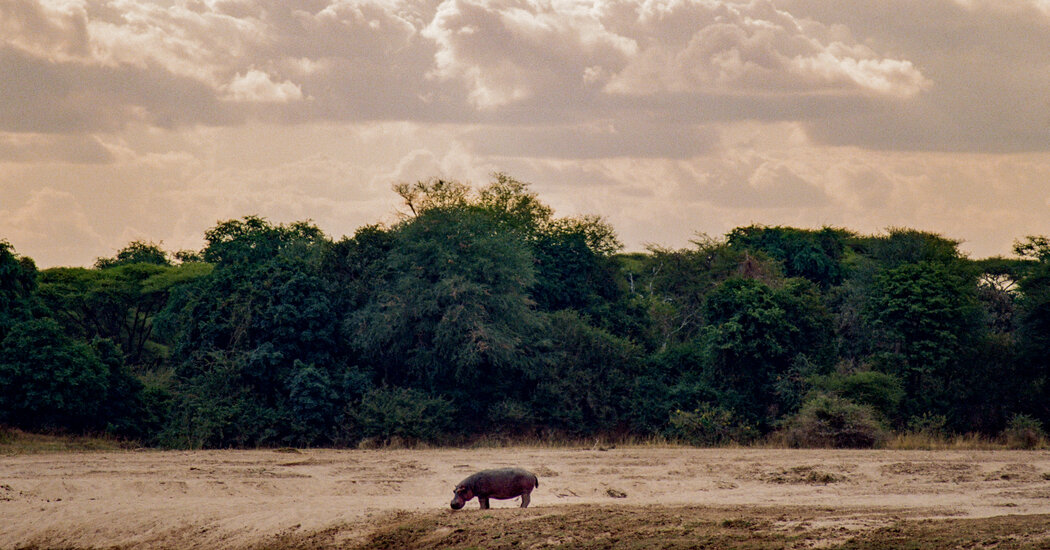The air was redolent with the scent of death.
“Don’t run!” our guide commanded. We were walking through the Zambian bush, the mopane trees alive with vultures waiting for a crack at the carrion — a massive Cape buffalo killed by lions who were feasting on their hapless prey in a nearby thicket.
My husband, Roger, and son, Gabe, and I were heading single file toward the big cats. Leading the way was a National Parks scout armed with a rifle who was forging a roundabout trail across a gully. My anxiety mounted with every crunching leaf underfoot. We heard a slight “grrrr” and soon spied a lion’s silhouette flickering through the bushes. I thought grimly about being dead meat. Then the wind shifted and the mighty beasts, picking up the scent of the ultimate predator — humans — fled into the brush.
We had landed several days earlier on a dirt airstrip in one of the most remote and least-touristed parks in Africa — North Luangwa National Park in Zambia — the tiny Cessna touching down on a smattering of impala droppings. The huge park, just shy of the size of New Jersey, has few roads and can accommodate only 400 or so visitors a year, at least for now (the safari season runs May to mid-November).
Zambia is unsung and unpretentious, blissfully free of animal-locater apps spawning traffic jams around lions and leopards. It is also the birthplace of the walking safari, a concept pioneered decades ago by Norman Carr, a swashbuckling conservationist and game ranger who raised two lions — Big Boy and Little Boy — as foster children.
On a three-week trip to Zambia, we visited two far-flung national parks — North Luangwa and Kafue — which have both been on the front lines of anti-poaching efforts. North Luangwa is home to the country’s only population of black rhino, a species that was declared extinct in Zambia in 1998 because of heavy poaching; the cantankerous animals were reintroduced five years later and are now thriving in a vast sanctuary jointly administered by the Frankfurt Zoological Society and the Zambian Department of National Parks and Wildlife.
In each park, we focused on walking, with a few long game drives in between. On foot we were accompanied by a guide and an armed scout, as per Zambian protocol, with a trainee guide in the rear. We traversed trails blazed by hyena and other animals and teetered on the rims of deep ruts in the earth created by elephants and hippos that had traipsed through the mud during rainy…
Click Here to Read the Full Original Article at NYT > Travel…
